A walk immersed in the spirit of Felixstowe’s Victorian and Edwardian seaside heritage along the promenade from Harvest House to Cobbolds Point and back again, an area steeped in far more history than you might at first realise.
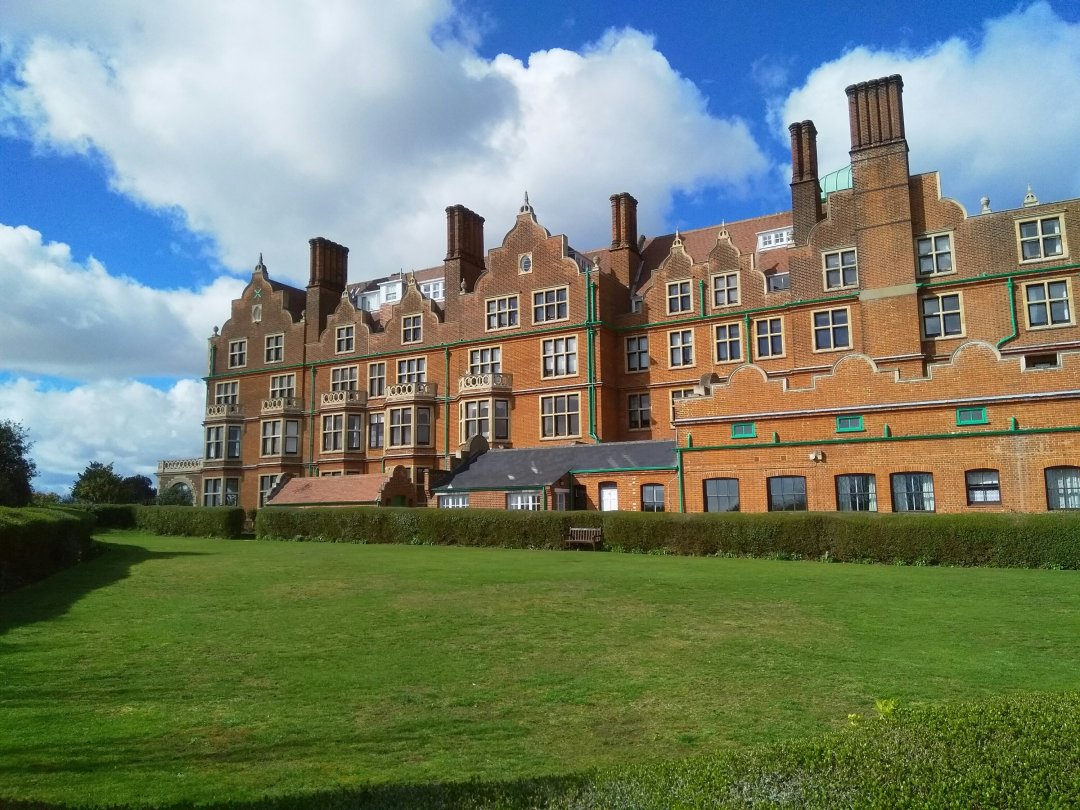
Rear view of Harvest House.
To begin this fascinating dip into Felixstowe’s Victorian (and Edwardian) past I would recommend parking anywhere along the seafront in Undercliff Road East.
Satnav; IP11 7LS
Once you’ve found a parking space (mornings are obviously better) then immediately head up the hill to the west. This is Cobbold Road and immediately you will see the impressive Harvest House. Now retirement flats this building was originally the grand Felix Hotel, opened in 1903 as part of grandiose plans to turn this part of the spa town of Felixstowe into a fashionable, respectable seaside resort. Cliff House and the Bath Hotel were already well-established here and luxurious Edwardian villas would spring up all along the cliff-top. This was the Town’s heyday, accelerated by the visit of Empress Augusta, wife of Kaiser Wilhelm, in the Summer of 1891. There was nothing like celebrity endorsement to promote the “wonderful sea air” and spa waters of the little Suffolk town. Felixstowe was put firmly on the map, and people flocked here…… if it was good enough for the German Royal Family…..?


Harvest House, built in 1903.
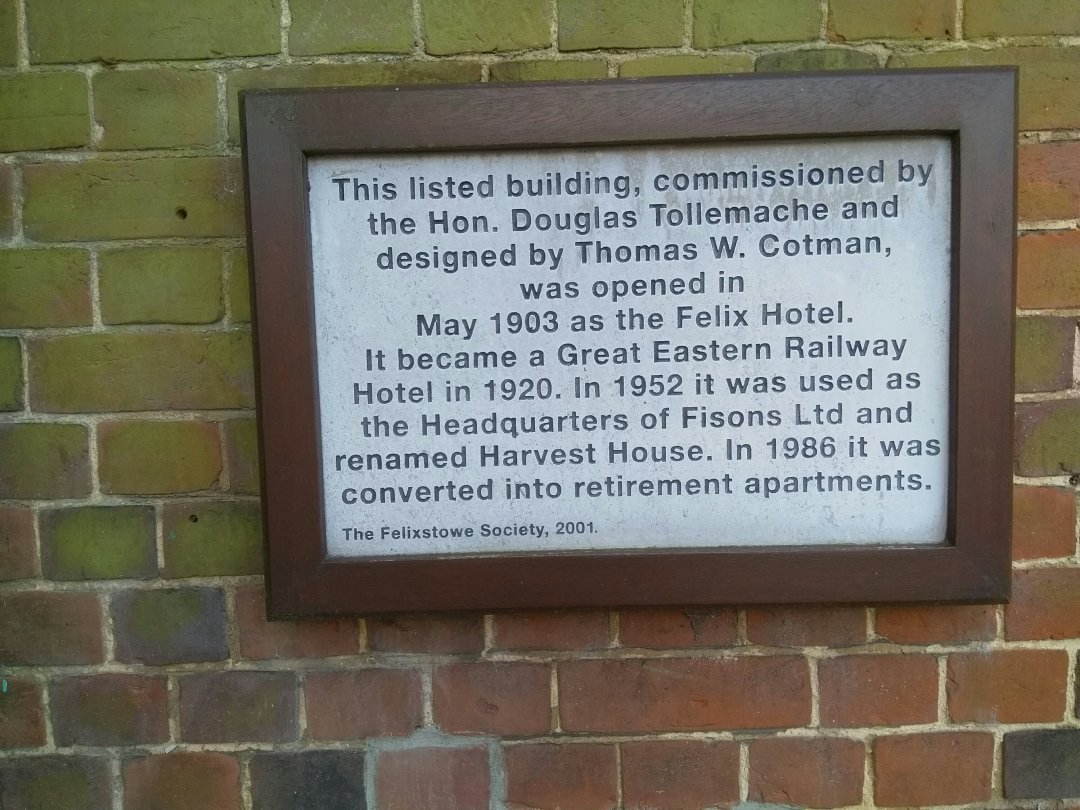
One of the most famous guests at The Felix Hotel was the American, Wallis Simpson, who stayed here in 1936 while waiting for her divorce so that she could marry King Edward VIII. This really was Suffolk’s very own Grand Hotel. Amongst other notable guests were the playwright George Bernard Shaw and British champion tennis player Fred Perry, who won Wimbledon in 1934 1935 and 1936.
In 1952 the hotel closed and it became the headquarters for Fisons Plc who changed its name to Harvest House. If you stand at the entrance you can almost regain the sense of grandeur that was so important to the early entrepreneurs who invested in Felixstowe, determined to steal the crown of premier Suffolk seaside destination from Aldeburgh or Southwold.
It is hard for us to imagine today, but Felixstowe (known as Felixstow until the 1890s) really was fashionable and “well-to-do”. People headed to the gardens, Hamilton Gardens, Town Hall Gardens and Cliff Shelter Gardens, all nationally recognised as outstanding and captivating. They festooned the cliffs west of the Felix. In 1902 the Urban District Council passed the Felixstowe and Walton Improvement Act, determined to put their town firmly on the tourist map. A promenade was built, along with a sea wall. New roads were laid out and impressive new town houses were erected all along the cliff-top.

Cliff House.
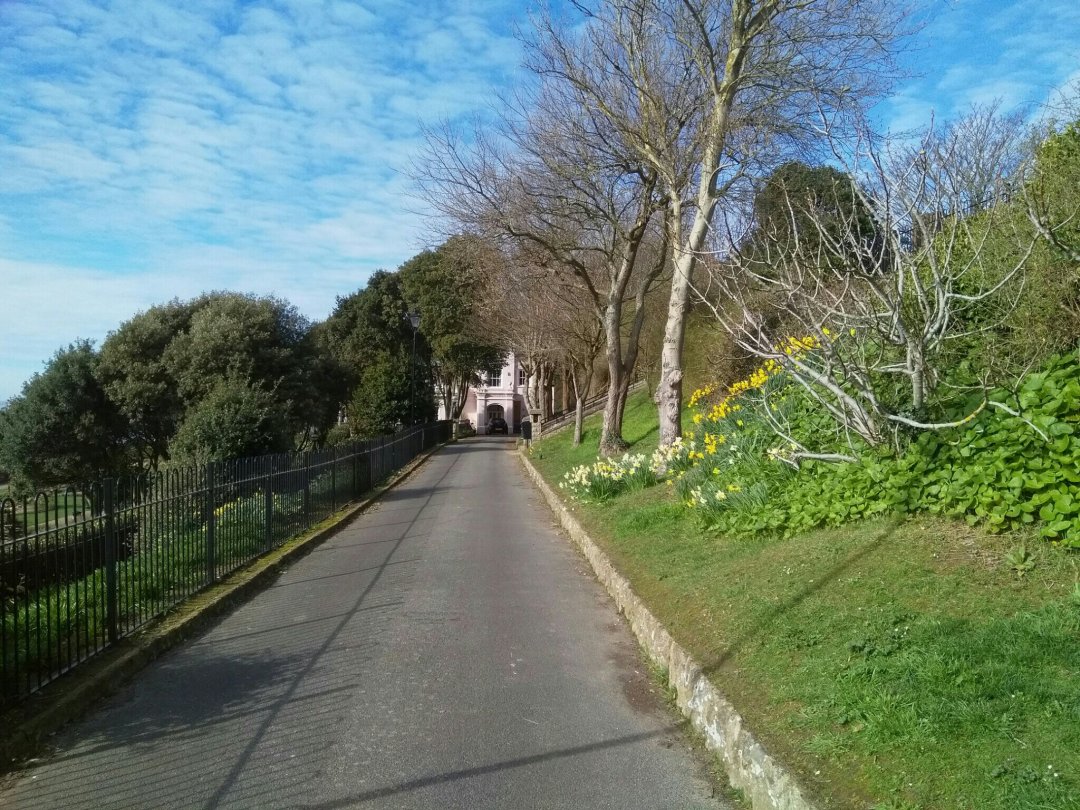
Head back down the hill from Harvest House but pause to turn right and have a look at the lovely gardens surrounding the original Cliff House. Seafront Gardens lead on to Spa Gardens, continuing a centuries-old legacy of interesting and well-kept cliff gardens here. The beautiful old Victorian building, now Cliffe Side Café has a terrace with a magnificent vista looking right along the coast to Walton-on-the-Naze, in Essex.
Returning to Cobbold Road you are now facing the old, infamous Bath Hotel. The rather bland looking building that greets you is all that survives of the old building, allbeit an annexe which met a very controversial end when it was burned down in 1914.
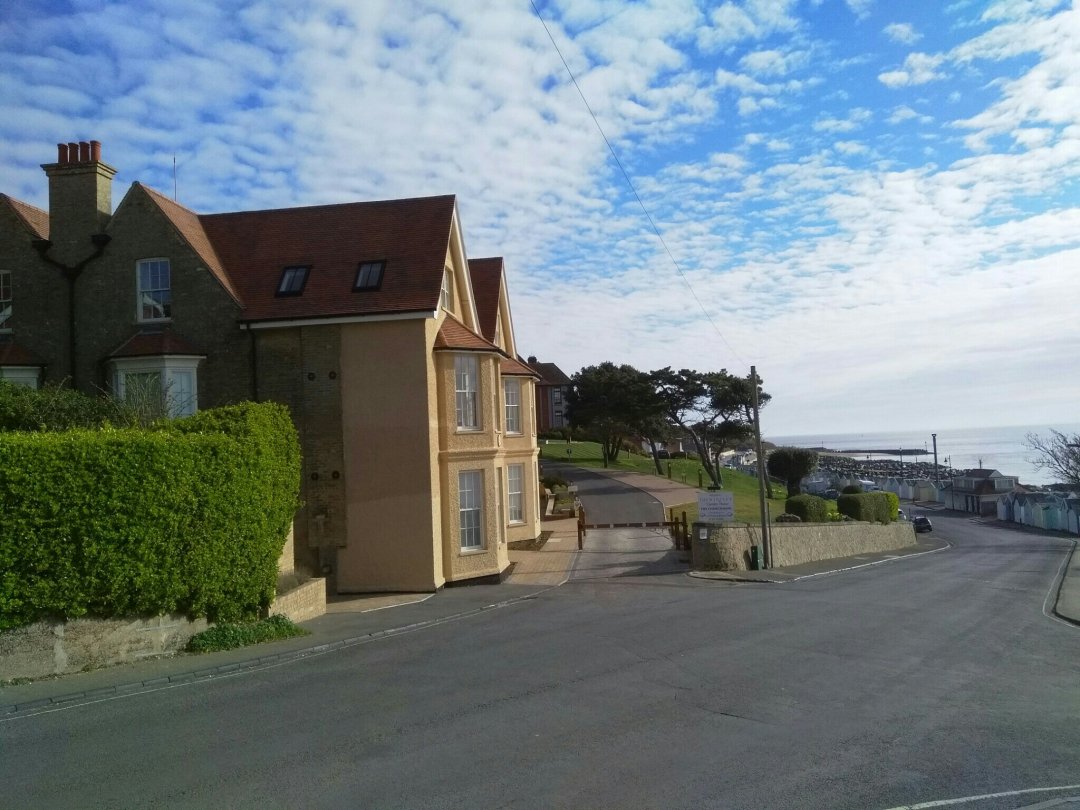
On the left; all that remains of the former Bath Hotel.
Originally the Bath Hotel was built in 1839 by the Cobbolds, a wealthy Suffolk brewing family with a great Felixstowe connection. It was known then as the Hamilton Hotel, and sat alongside an old Martello Tower (long since demolished). There was also a cricket ground here. But the great Bath Hotel was firmly established as part of Felixstowe’s burgeoning reputation as a Spa town. It offered “warm and salt water baths”. It was the ultimate in luxury.
On 28th April 1914 two women, Evaline Burkitt, 37 and Florence Tunks, 22 set light to the 70-bedroom hotel in an arson attack that was part of an ongoing militant campaign to highlight the suffragette movement and the struggle for votes for women.
The hotel was virtually destroyed and the women were imprisoned. They received terms of 2 years and 9 months after a high-profile court case at Bury St Edmunds Assizes. In prison they continued their campaign through hunger strike and were force fed and treated terribly. There is now a plaque commemorating the women, on what is now Cautley House, 34 luxury apartments.
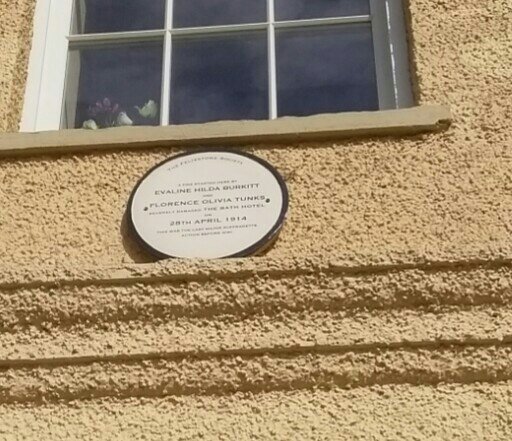
Plaque to suffragettes Evaline Burkitt and Florence Tunks.
Beyond Cautley House a sweeping driveway veers up to the former Bartlett Hospital, opened in 1926 and closed in 2006. What became the Bartlett Convalescent Hospital is now luxury housing, commanding fine views across the sea, and a landmark visible from the Edwardian promenade below for miles.
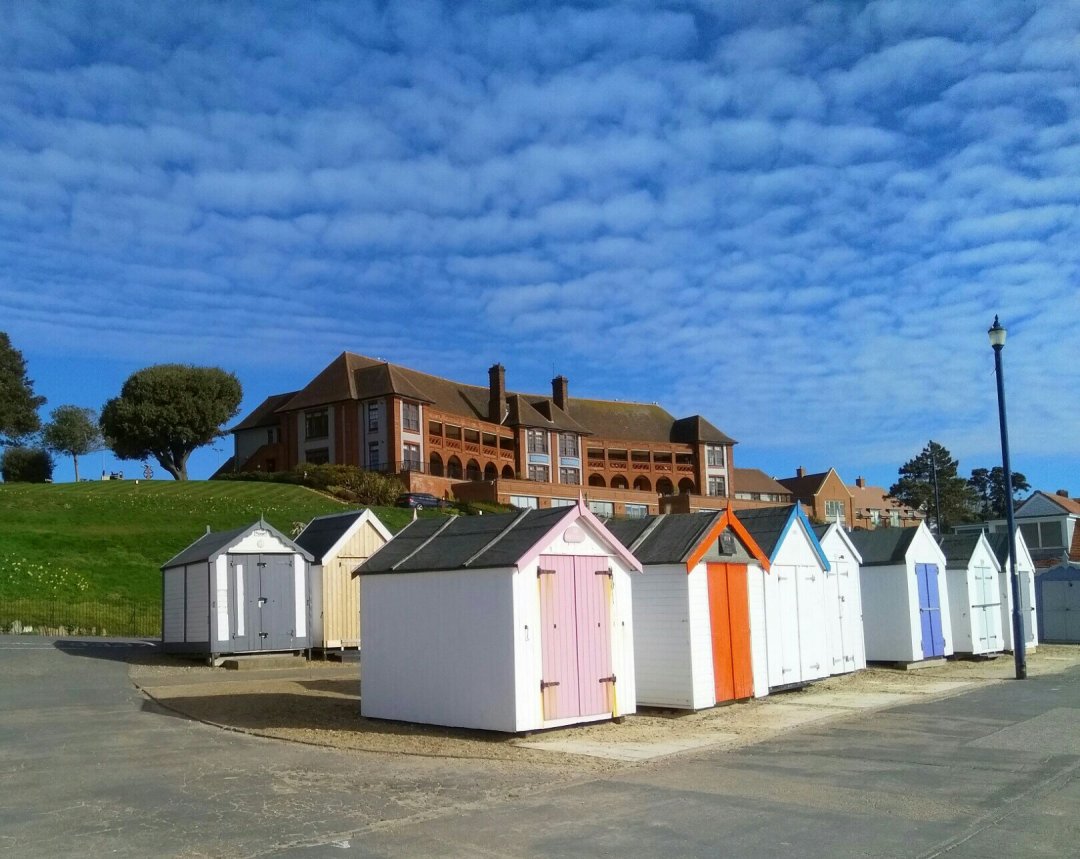
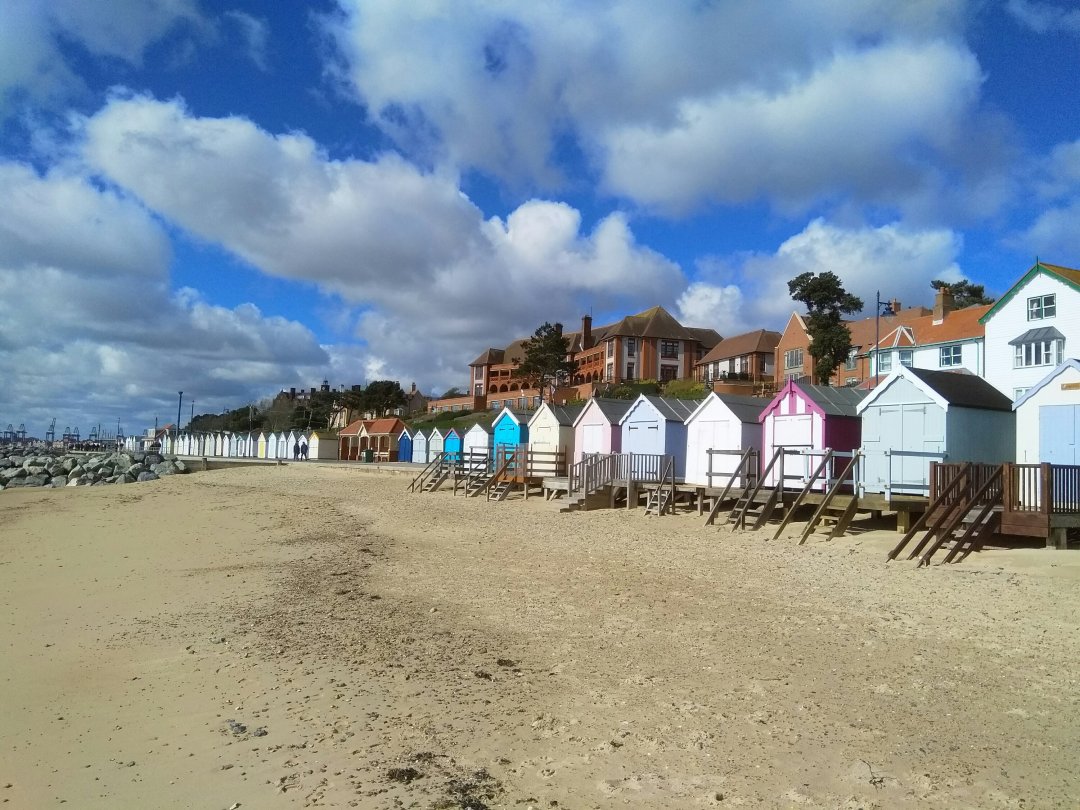
The former Bartlett Hospital dominates the skyline above beach huts.

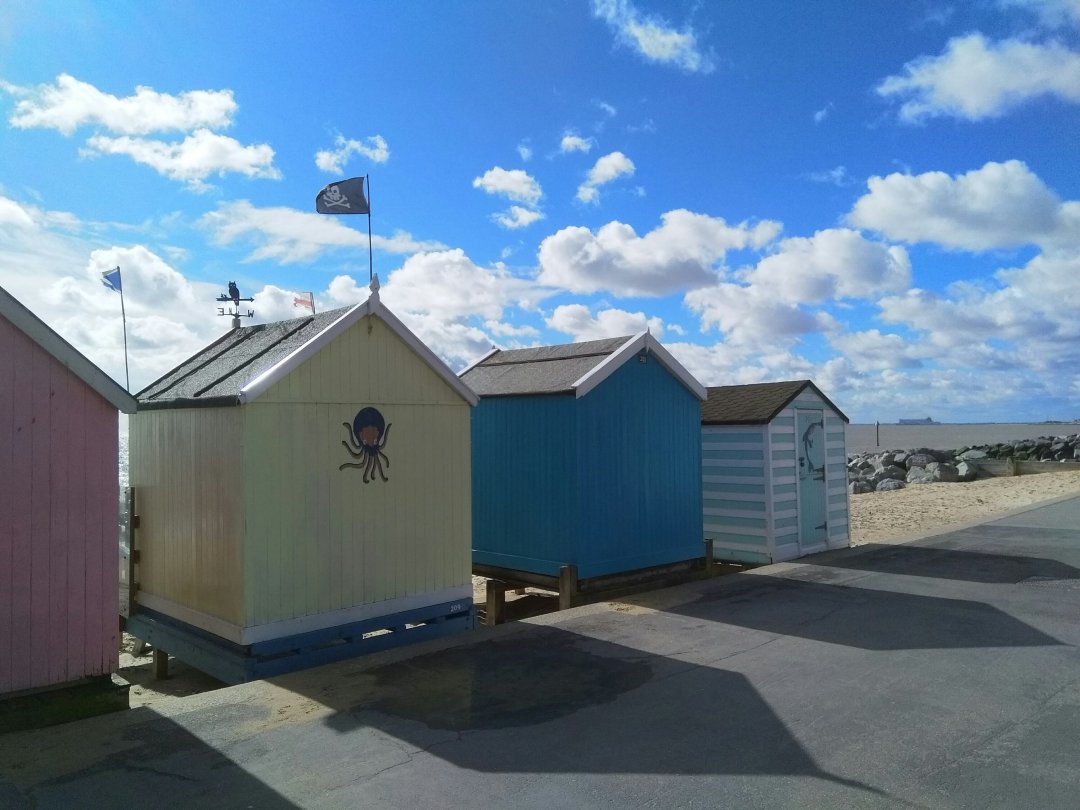
Beach huts are an integral part of the scene here.
At the bottom of the hill the beach here has a lovely nostalgic feel of a classic British seaside resort. There is none of the “tacky” modern trappings, like amusement arcades or cheap stalls. No, this is a timeless part of Felixstowe, harking back to its Edwardian golden past. You can find all the other stuff down by the Pier and by Charlie Manning’s. But not here. Here you can buy an ice cream at the kiosk and admire the quirky beach huts that line the promenade in front of a peaceful beach where families can spend a relaxing afternoon building sandcastles as they have done for decades. Some might say it has a “Southwold” feel, but this distinctive part of Felixstowe has its own unique quality and charm, not sensed down the “other end” with its close proximity to the Container Port.


Delightful “seaside” weatherboard architecture.
Now walk along Undercliff Road East with the former Bartlett Hospital high up on the cliff top to your left. As mentioned, there was a Martello Tower here, built along the southeast coast of England in the early years of the 19th Century the towers were a chain of defensive forts on high alert for a French invasion during the Napoleonic Wars. The tower here must have had a spectacular vista out to sea. Sadly, like many of these quirky unique towers, it fell into decline and was ultimately pulled down.
However this area is quite unique in England in the fact that it did witness a foreign invasion. It was the last time an invading enemy landed any sort of foot-hold in this country.
It all took place in June 1677 as part of the Second Anglo-Dutch War. A superior Dutch Navy under the command of Michiel de Ruyter sent boats ashore here with over 2,000 armed marines and sailors with the intention of attacking Landguard Fort from inland, seizing the element of surprise from the 900 or so soldiers guarding the fort with its strategic protection of the Royal Naval base at Harwich.
The Dutch force split in two, leaving mostly sailors on the beach while the party of mostly marines hauled their equipment over the shingle to attack Landguard Fort. These marines were soon defeated and reinforcements hastily attacked the sailors stranded on the beach. It was all over by nightfall with just 10 English casualties. The Dutch meanwhile had lost 150 killed or captured. It was a humiliating defeat and the very last “invasion” of England. And it happened right here, within sight of the Fludyers Arms. To stand on the beach now on a sunny Summer’s day it is hard to imagine noise and fear and death, all in such a peaceful idyllic place.
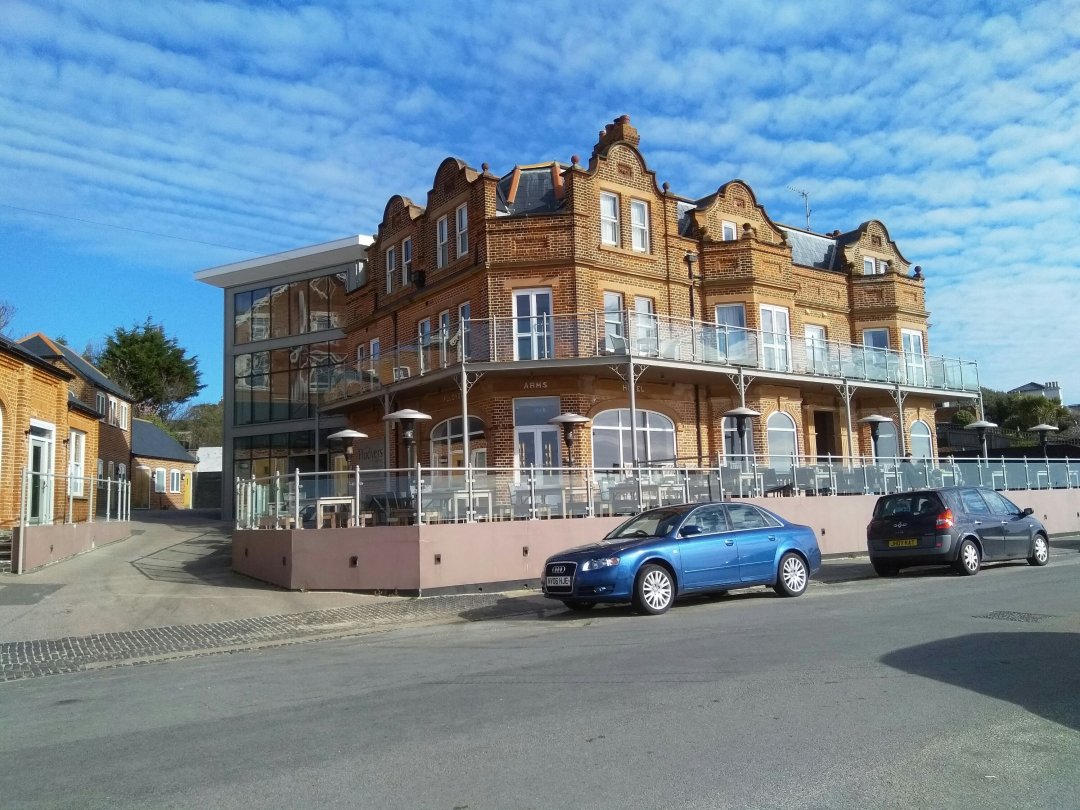
Fludyers Arms Hotel.
The Fludyers Arms in fact gave its name to the area here, locals refer to this part of Felixstowe as “the Fludyers” or “Fludyers End” So why Fludyers? What does it mean? In fact this elegant brick-built Edwardian hotel was built in 1903, but it replaced a much older wooden structure dating back to at least 1833 and for a time both buildings stood side by side. The name honours Sir Samuel Fludyers who, like Lord and Lady Harland, Philip Thickness and Felix Cobbold, was a pioneering property developer in the fledgling seaside town here. Sir Samuel died in 1833 and is buried locally with his wife. He was the grandson of another Sir Samuel Fludyers, who was Lord Mayor of London in 1760.
It has to be mentioned too, that it was an enormous sense of pride (and nostalgia) that the decision was made in 2013 to remove the architectural abomination from the front of the hotel. With this 1960s “conservatory” extension removed the building has returned to a more elegant aesthetically-pleasing appearance more fitting it’s grand history.

The Fludyers pre-2013 with the ugly 1960s extension, now thankfully gone.
Picture; EADT
Just past the Fludyers Arms is Brook Lane, a road to our right disappearing sharply up the hill into the cosy Edwardian “suburbs”. On an OS map of 1886 just opposite the end of this Brook Lane there is a rather long pier, marked on the map as the “Old Pier”. In the OS map of 1905 this feature is greatly reduced and marked as “Old Pier, Remains of…” The Pier we all know in Felixstowe today was built in 1906 and is known as “the New Pier”. I wonder what happened to the old original one.
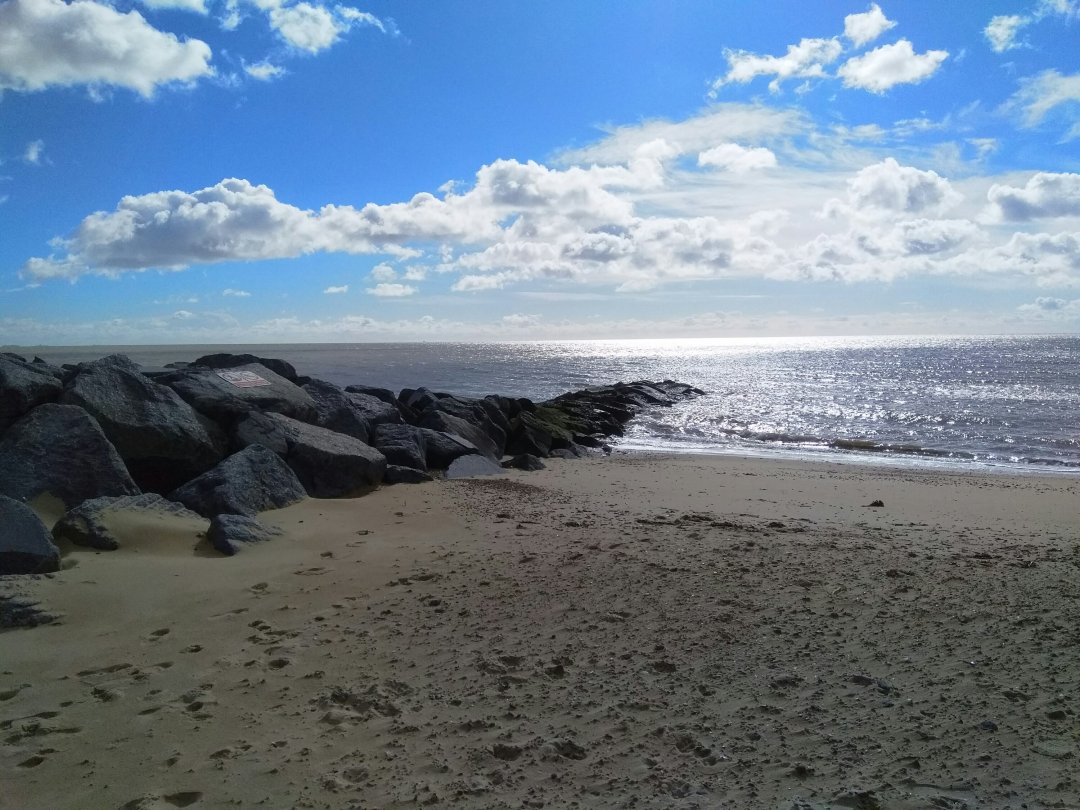
In front of Brook Lane, site of “the Old Pier”.

Vernon Villa.
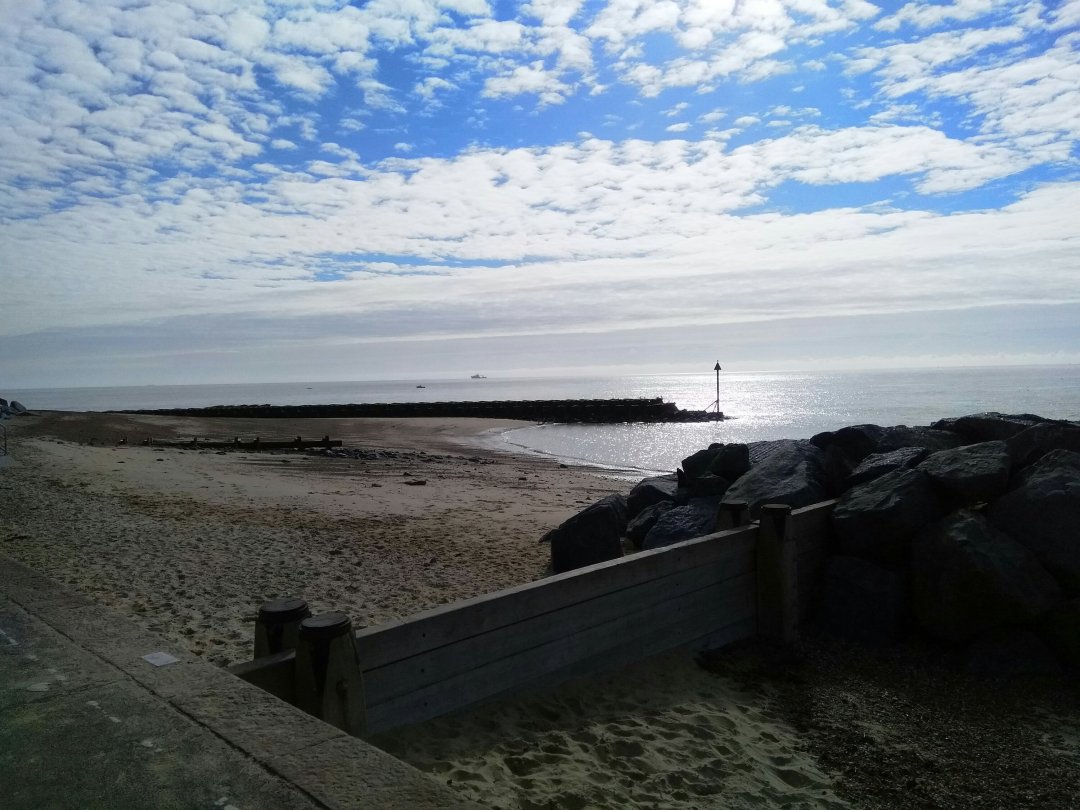
Cobbolds Point.
And so we come to the end of the road as drivers are carried away towards Felixstowe Ferry on Maybush Road. But this isn’t the end of the promenade. We pass the majestic Vernon Villa and begin the sandy walk around Cobbolds Point. Once known as Cottage Point there was a fisherman’s cottage here. In 1844 John Chevalier Cobbold purchased the property from the then owner Sir Samuel Fludyers and the impressive gothic-style Cranmer House was erected in 1885.
This splendid Grade II Listed building is just another example of the work of architect Thomas W Cotman (1802-1871) nephew of the famous Norwich artist John Sell Cotman. Cotman’s work changed the face of Felixstowe and his work can be seen all over the Town, most notably at Harvest House (the old Felix Hotel) but also the Bath Hotel, the Orwell Hotel, the Town’s railway station and other prominent buildings including Lloyds Bank in Hamilton Road. He lived at Cotman Cottage, a bungalow he designed himself which now forms the ground floor of Cotman House nursing home. A fitting tribute to a man with such an everlasting influence on Felixstowe. He is buried at the pretty little church of St Peter and St Paul, the original parish church for Old Felixstowe, and possibly the town’s oldest building.
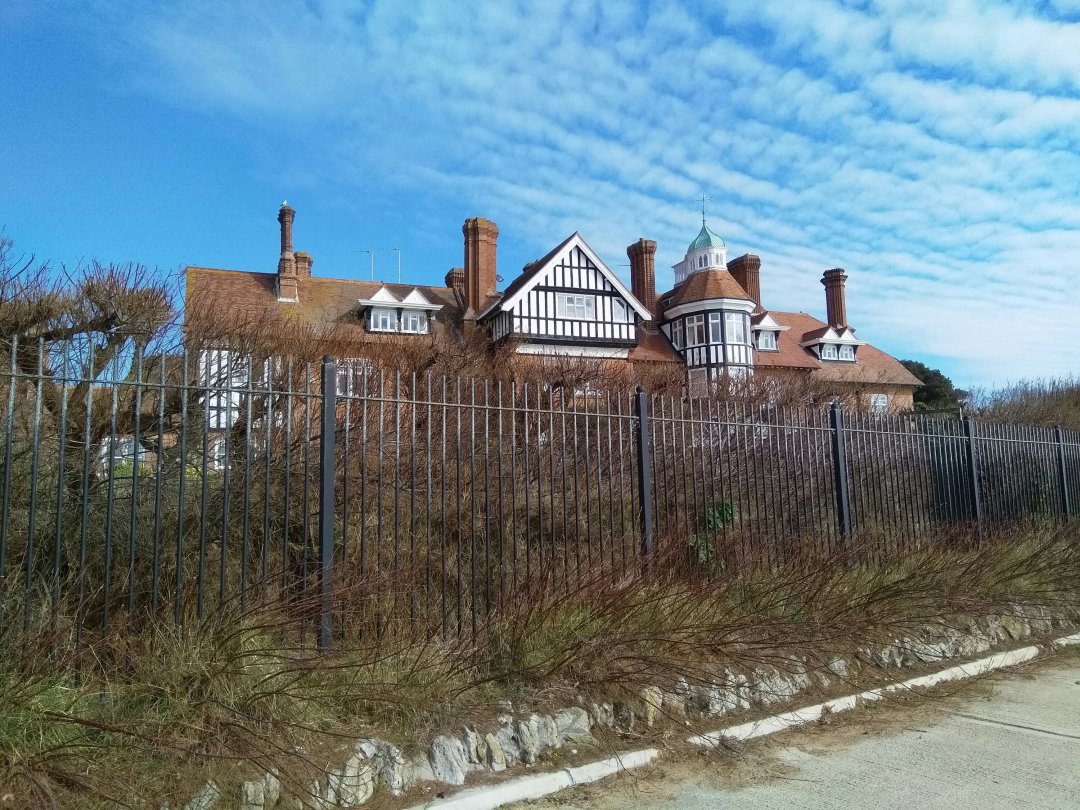

Today this impressive house with its magnificent unrivalled sea views has been divided into five luxury houses within one. But for a long time (from 1929 until 1995) this was the home of Felixstowe Ladies College, a name still commemorated in College Green, a road at the rear where other “houses” from this distinguished boarding school still stand out with their educational redbrick architecture.

The unusual gardens of Cranmer House, seen from the promenade.
Cobbolds Point is of course just that, a point. It juts out into the harsh unforgiving sea where there has been a battle since time immemorial between the man-made shoreline and the relentless hammering of the North Sea tides. Felix Thornley Cobbold (1849-1909) was the man who saw the power and damage inflicted here and realised that if defences weren’t strengthened then coastal erosion would eat at the very door of Cranmer House. The Victorian groynes put in place lasted the test of time until just past our millennium. After 2000 the promenade here was in a very dangerous condition, the path virtually impassable as huge blocks of the broken path and sea wall witnessed savage saltwater waves tearing at the cliff. Luckily the situation was reversed, as in Felix’s day and the prom is now a wonderful sweeping pathway around the Point again.

View from Cobbolds Point.
The promenade eventually ends, past the unusual gardens of Cranmer House and there is access to a secretive sandy beach with views far along the coast all the way to the distant Bawdsey Manor. It is a good opportunity to turn back here, pausing at the Point to view the scene of Felixstowe’s old Victorian beach in front of you. Just in sight in the distance are the giant cranes of the Port of Felixstowe where some of the World’s biggest ships call to unload their cargo of thousands of containers. That’s modern Felixstowe. But just in front of you is the old Felixstowe. A grand elegant dream of a spa resort.
It isn’t had to imagine the former scene here….. bathing-machines by the Old Pier, ladies and gentlemen in all their refinery “promenading” along the beach on a sunny Sunday with the magnificent Felix Hotel just beyond. Here is a real special piece of Felixstowe’s history. Most visitors couldn’t possibly know they are surrounded by such eventful history…. suffragettes burning down a fine hotel, Dutch soldiers storming the beach, German royalty taking in the sea air, a powerful brewing family changing the landscape and a wonderful architect who stamped his mark all over town. An area known as Fludyers.
Am new to the area at 70 to live – a fascinating twilight end to my life it shall be …. Scottish musician
LikeLiked by 1 person